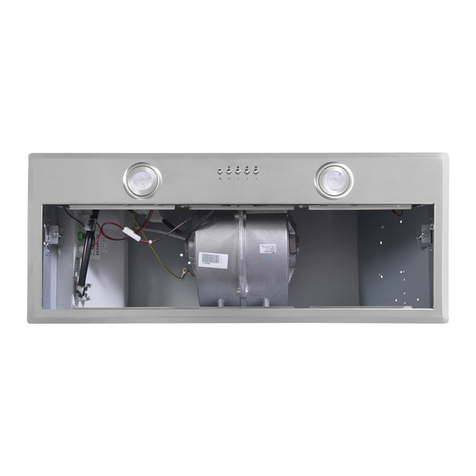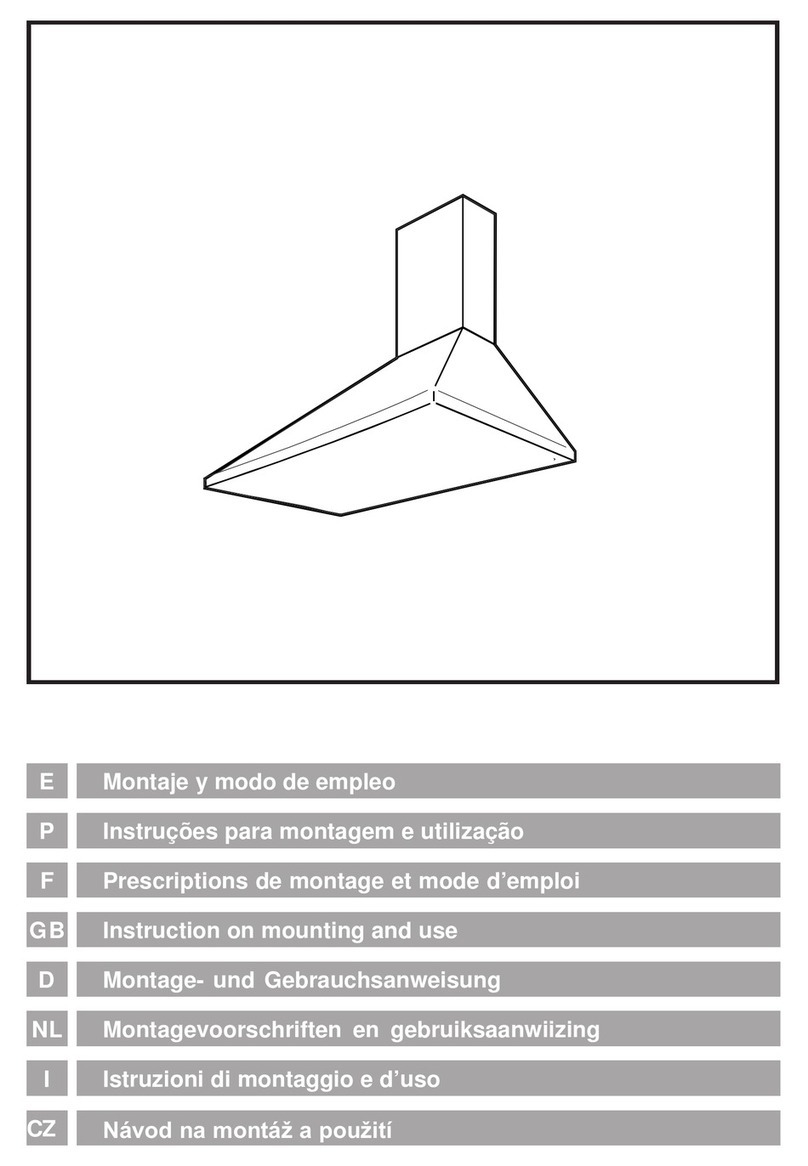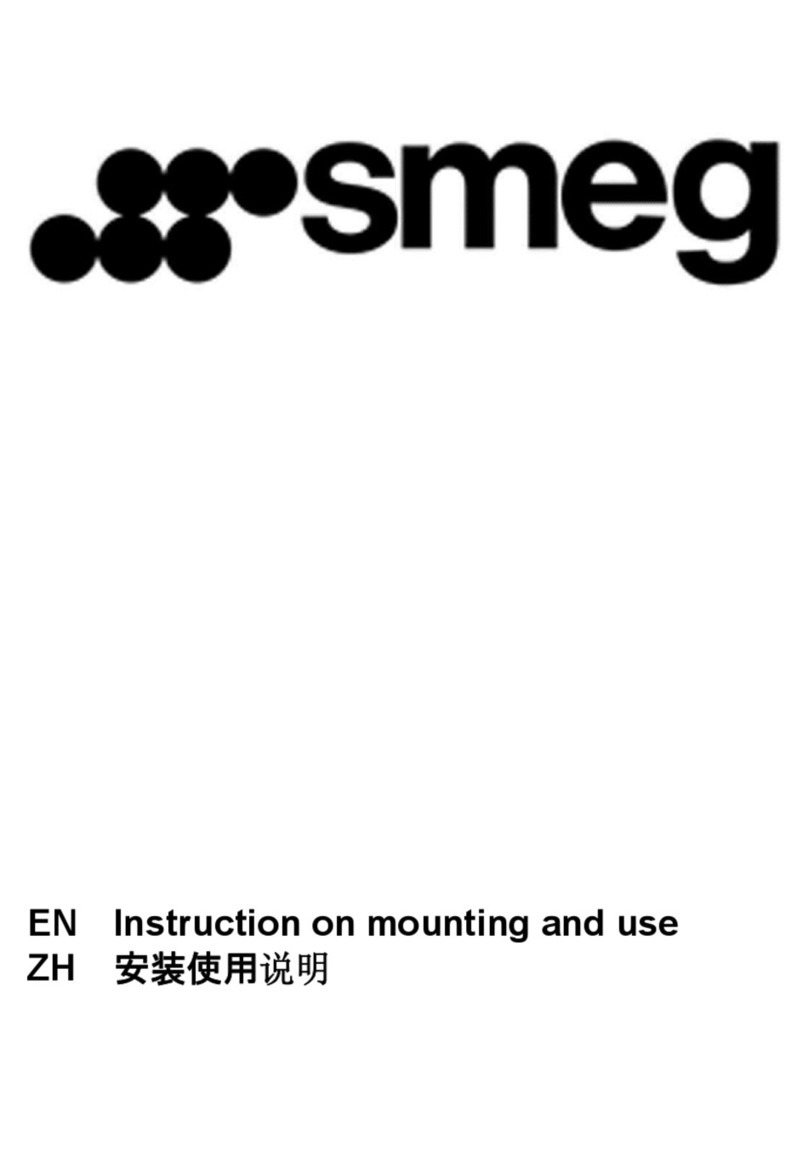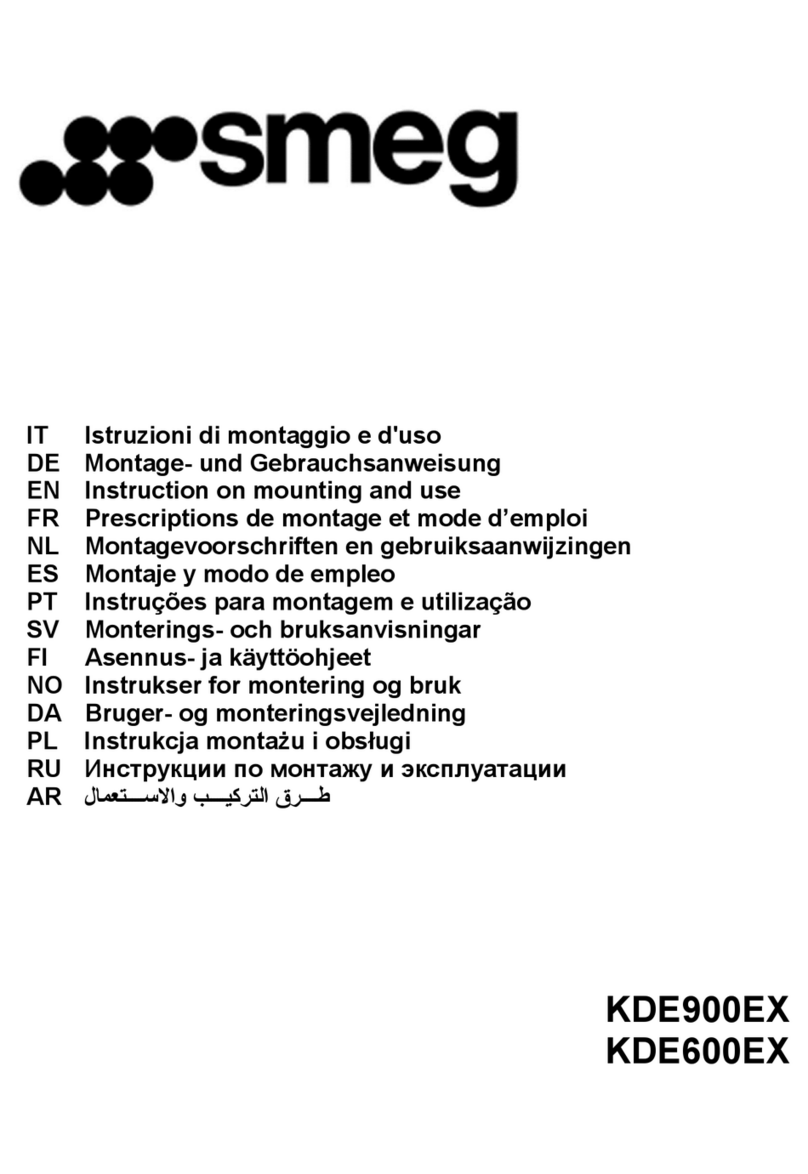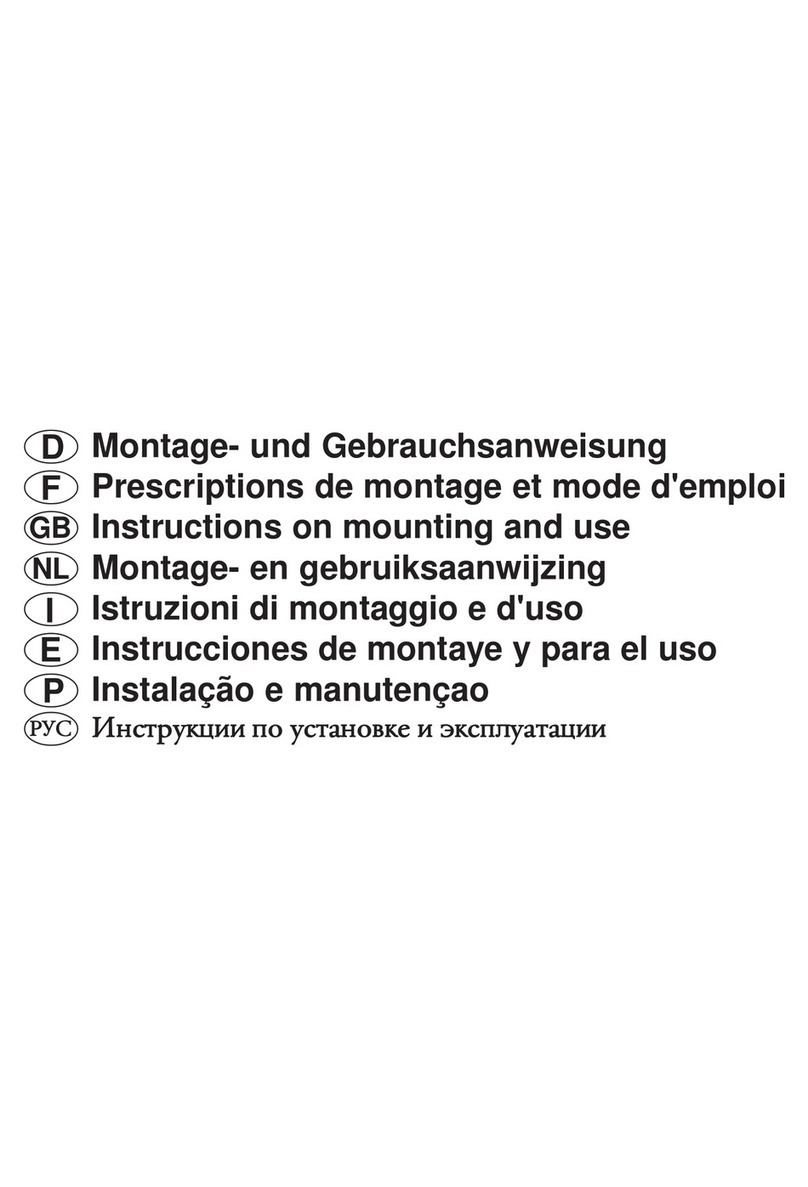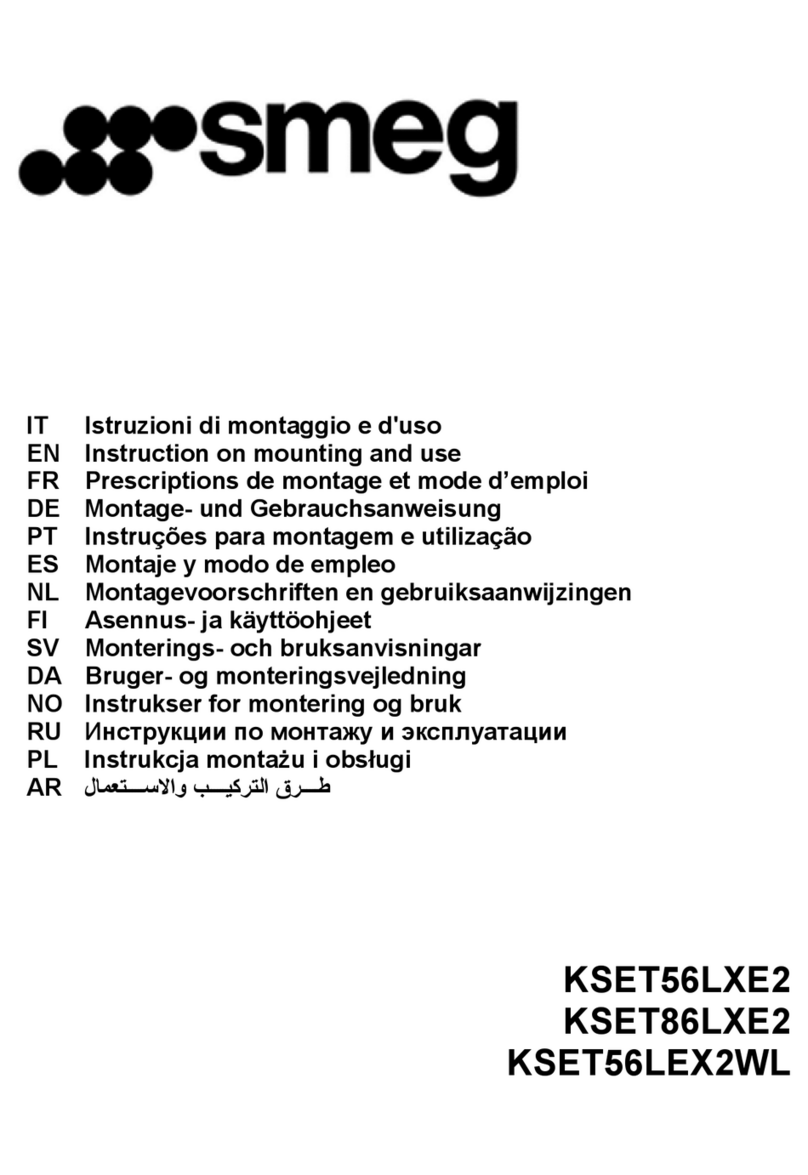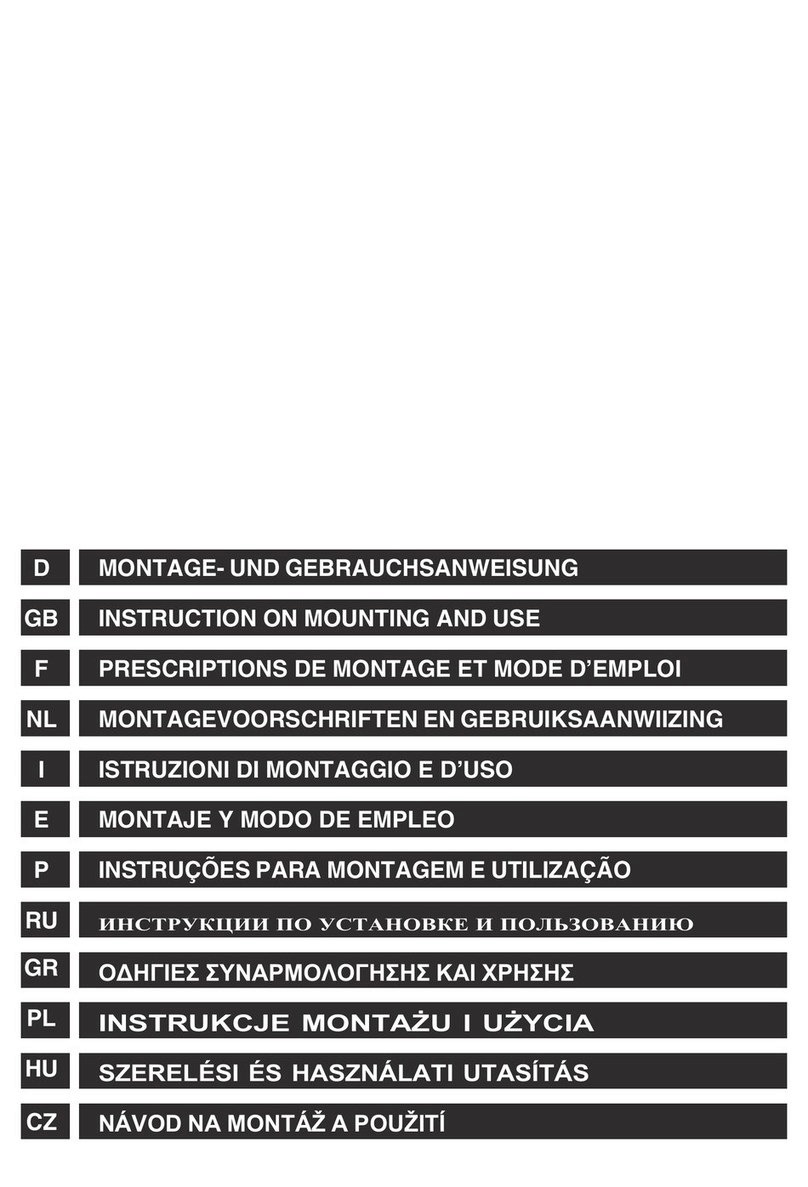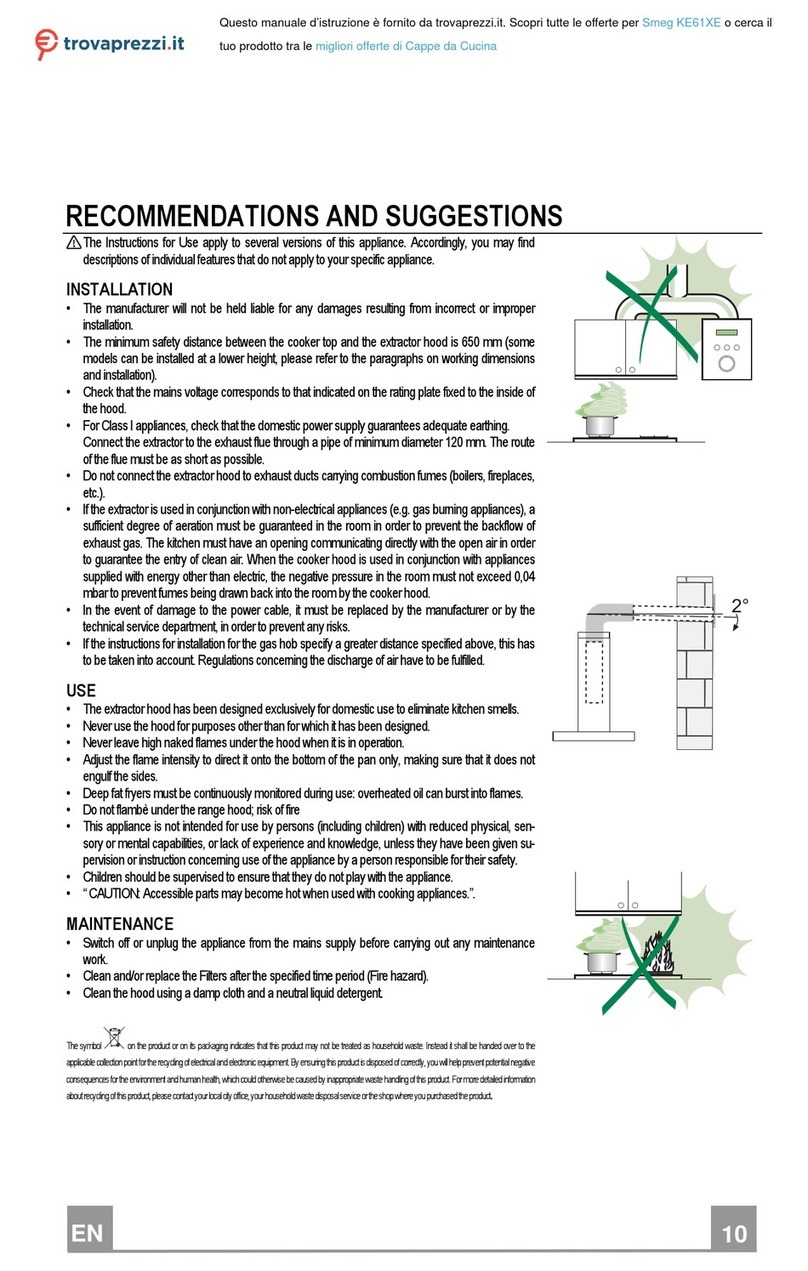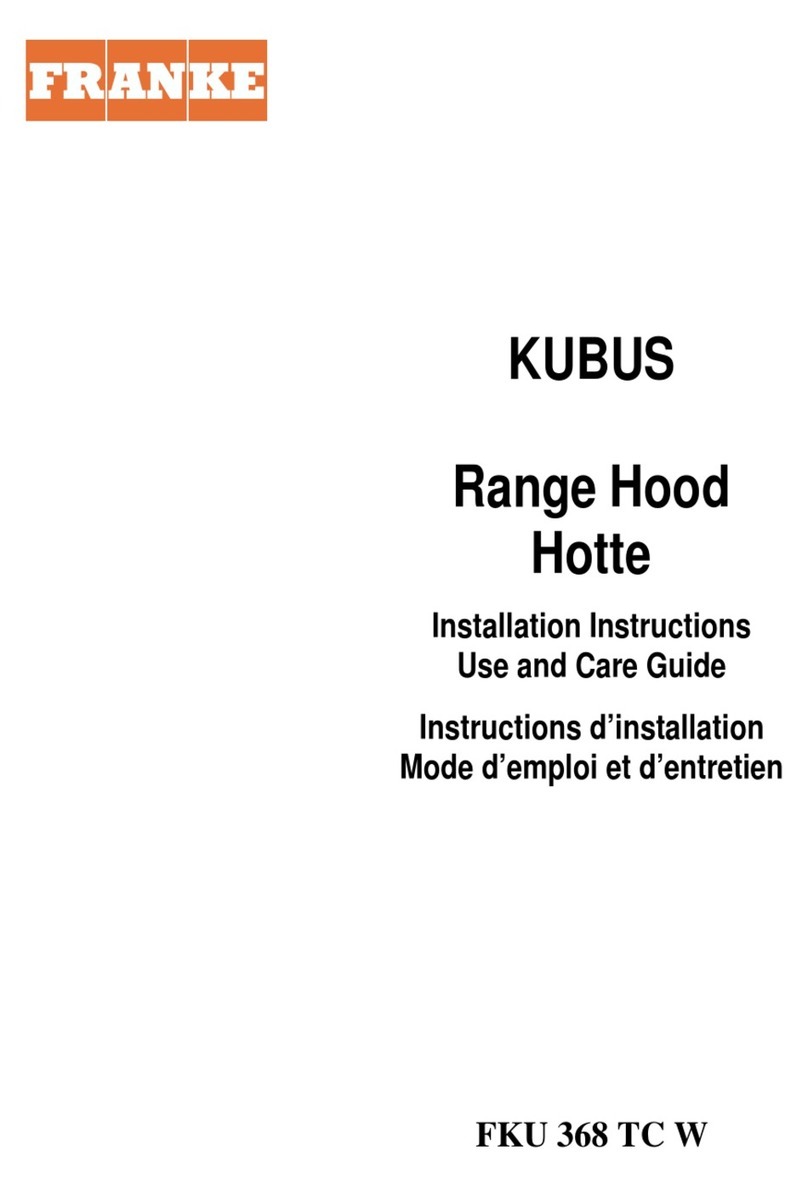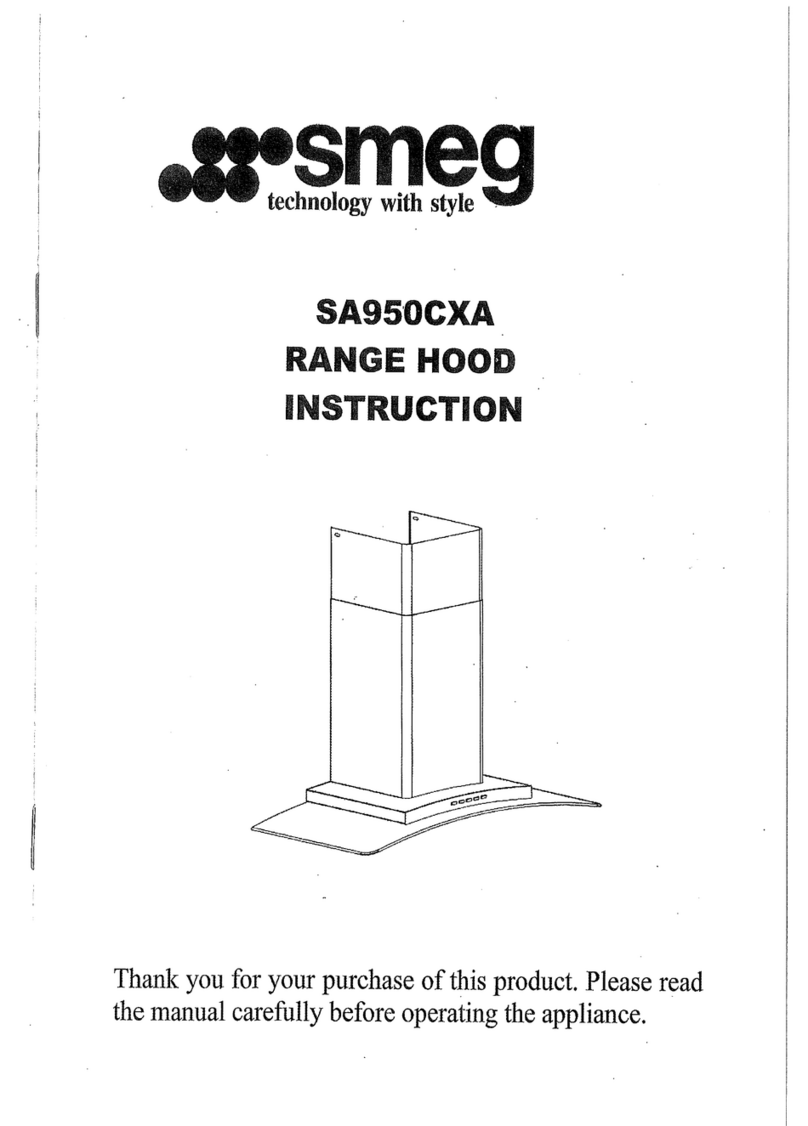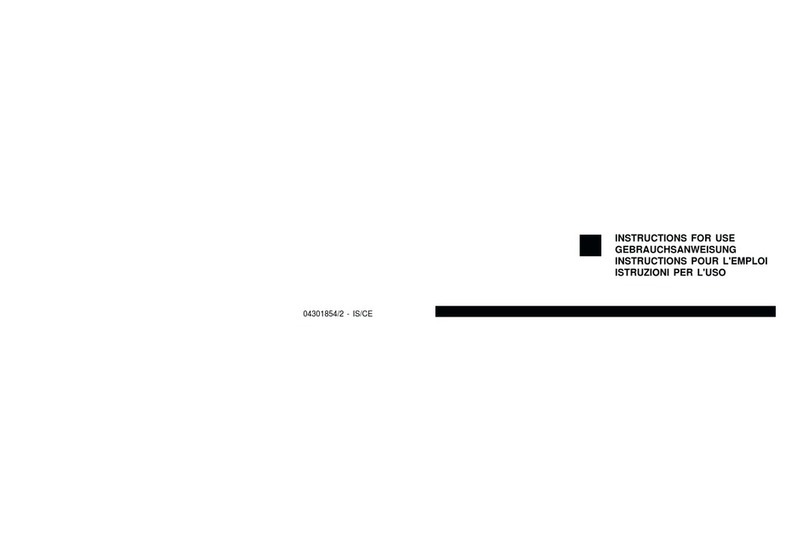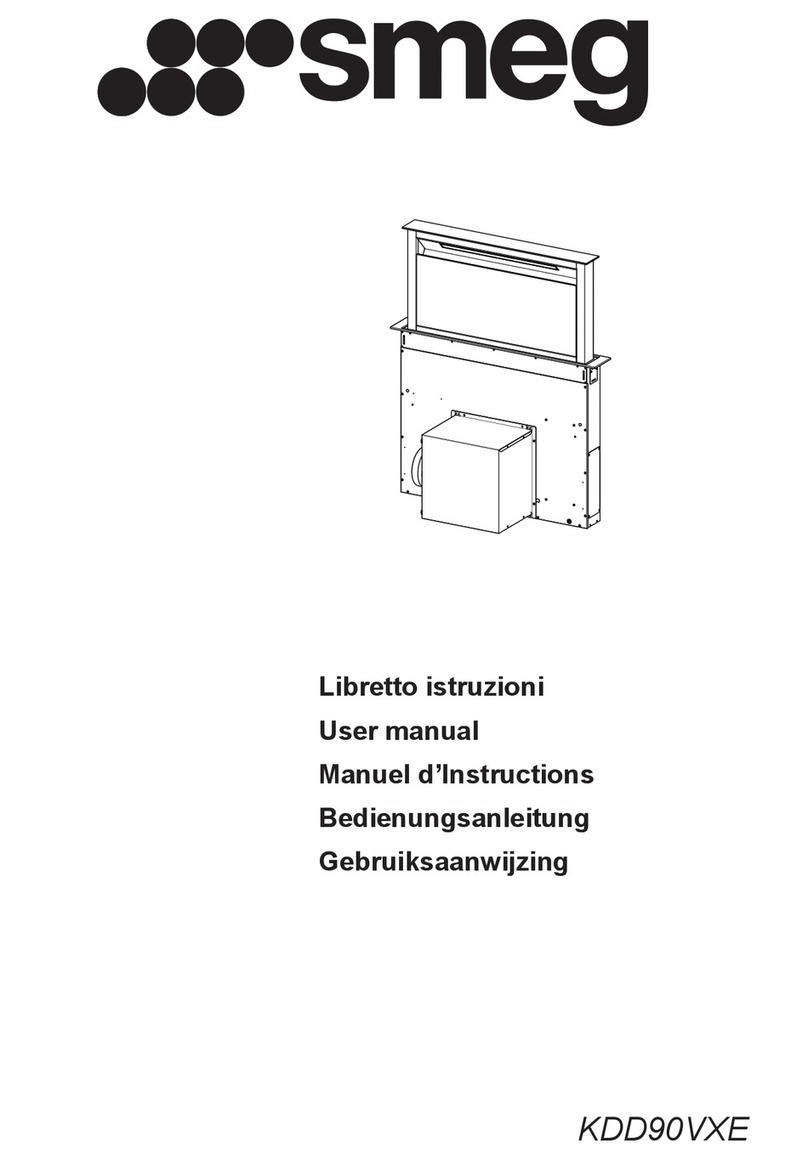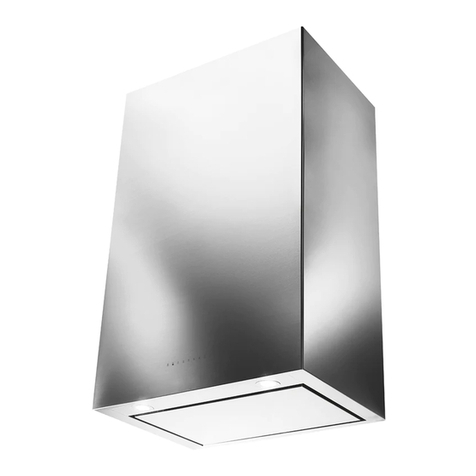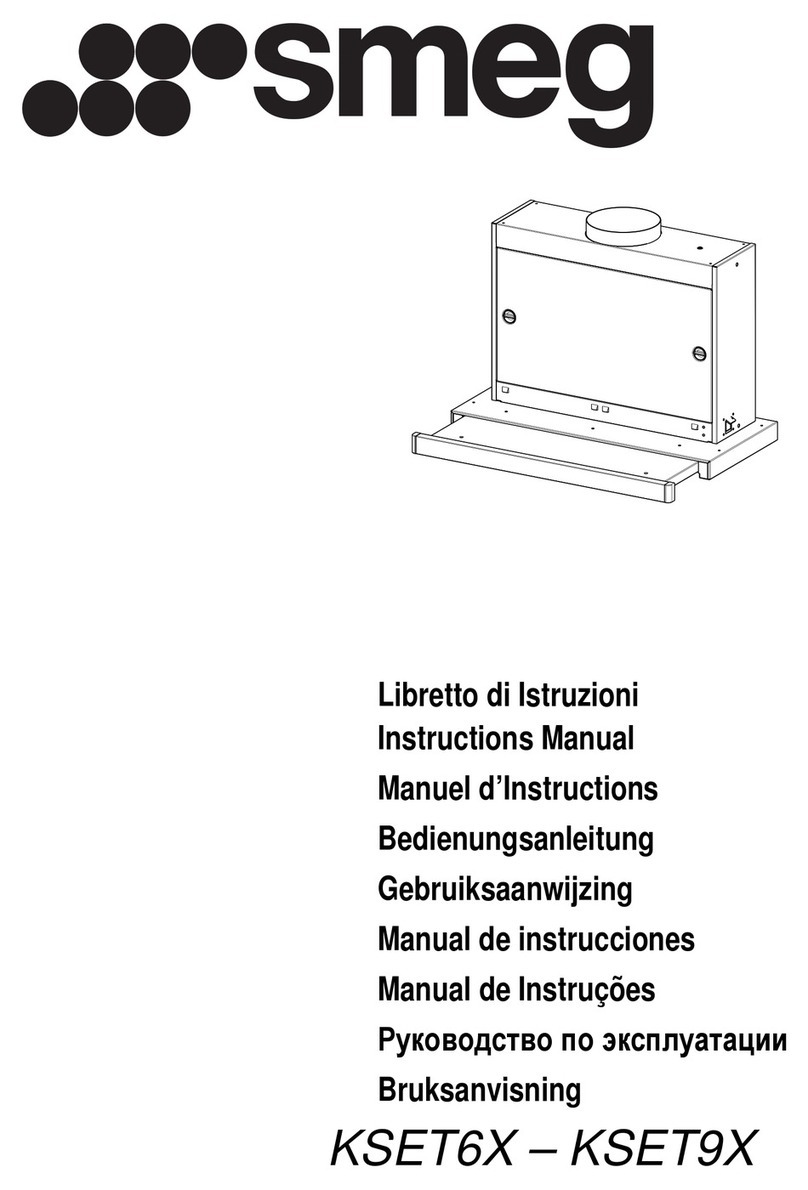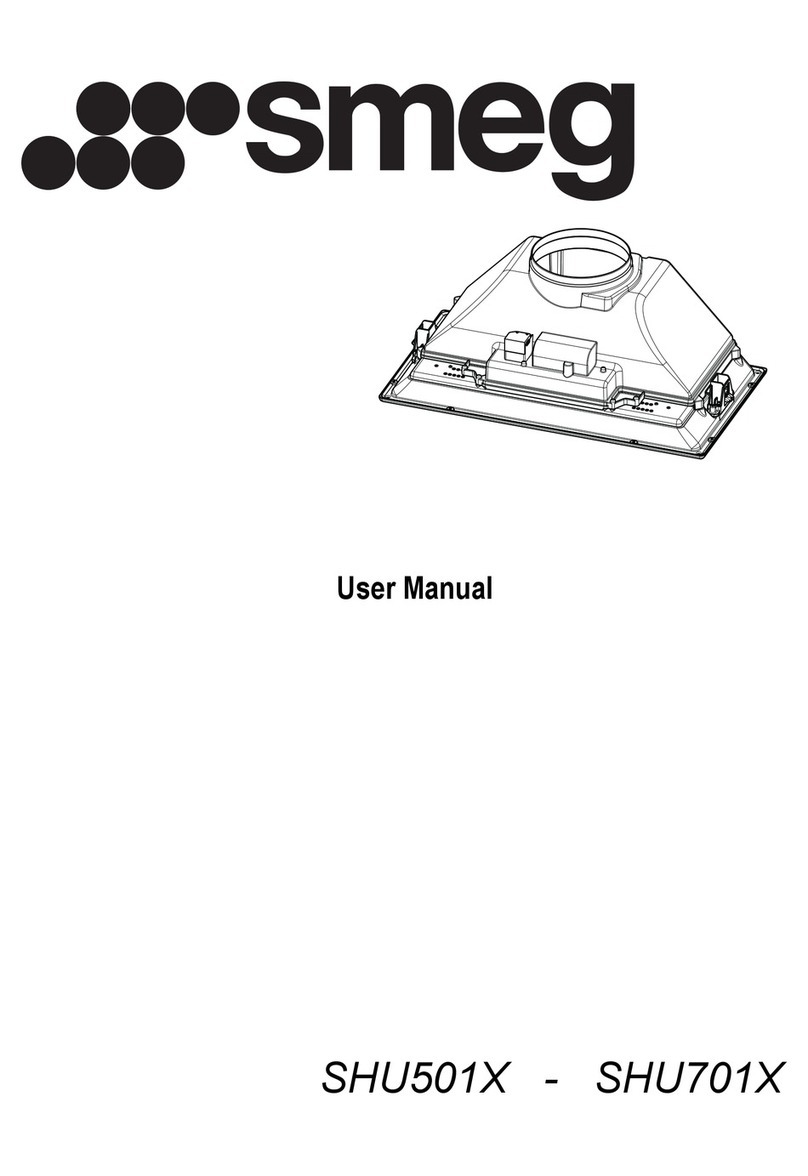IT 4
4
CONSIGLI E SUGGERIMENTI
Questo libretto di istruzioni per l'uso è previsto per più versioni dell' apparecchio. É possibile che siano
descrittisingoliparticolaridelladotazione,chenonriguardanoilVostroapparecchio.
INSTALLAZIONE
• Il produttore declina qualsiasi responsabilità per danni dovuti ad installazione non corretta o non conforme
alleregoledell’arte.
• La distanza minima di sicurezzatra il Piano di cottura e la Cappa deveesseredi 650mm, (alcuni modelli
possonoessereinstallatiadun’altezzainferiore,fareriferimentoaiparagrafiingombroeinstallazione).
• Verificarechelatensionediretecorrispondaaquellariportatanellatarghettapostaall’internodellaCappa.
• Per Apparecchi in Classe Iaaccertarsi che l’impianto elettrico domestico garantisca un corretto scarico a
terra.
• Collegare la Cappa all’uscita dell’aria aspirata con tubazione di diametro pari o superiore a 120 mm. Il
percorsodellatubazionedeveessereilpiùbreve possibile.
• NoncollegarelaCappaacondottidiscaricodeifumiprodottidacombustione(caldaie,caminetti,ecc.).
• NelcasoincuinellastanzavenganoutilizzatisialaCappa cheapparecchi nonazionatidaenergiaelettrica
(adesempioapparecchiutilizzatoridi gas), sideveprovvederead unaaerazionesufficientedell’ambiente.
Se la cucina ne fosse sprovvista, praticare un’apertura che comunichi con l’esterno, per garantire il richia-
mo d’aria pulita. Un uso proprio e senza rischi si ottiene quando la depressione massima del locale non
superai0,04mBar.
• Incaso didanneggiamento delcavo alimentazione,esso deve esseresostituitodal costruttore odal servi-
ziodiassistenzatecnica,inmododaprevenireognirischio.
• Se le istruzioni di installazione del dispositivo di cottura a gas indicano che è necessaria una distanza
maggioredi quellaindicatosopra,ènecessariotenerne conto.Bisognarispettaretutte lenormativerelative
alloscaricodell’aria.
USO
• LaCappaèstataprogettataesclusivamenteperuso domestico,perabbatteregliodoridellacucina.
• NonfaremaiusoimpropriodellaCappa.
• NonlasciarefiammelibereaforteintensitàsottolaCappainfunzione.
• Regolare sempre le fiamme in modo da evitare una evidente fuoriuscita laterale delle stesse rispetto al
fondodellepentole.
• Controllarelefriggitricidurantel’uso:l’oliosurriscaldatopotrebbeinfiammarsi.
• Nonpreparare alimentiflambèsottolacappadacucina;pericolod'incendio.
• Questoapparecchionondeveessereutilizzatodapersone(bambiniinclusi)conridottecapacitàpsichiche,
sensorialiomentali,oppuredapersonesenzaesperienzaeconoscenza,amenoche nonsianocontrollati
oistruitiall’uso dell’apparecchiodapersoneresponsabilidellalorosicurezza.
• Ibambinidevono esseresupervisionatiperassicurarsichenongiochinoconl’apparecchio.
• “ATTENZIONE: Le parti accessibili possono diventare molto calde se utilizzate con degli apparecchi di
cottura.”
MANUTENZIONE
• Prima di procedere a qualsiasi operazione di manutenzione, disinserire la Cappa togliendo la spina elettri-
caospegnendol’interruttoregenerale.
• Effettuare una scrupolosa e tempestiva manutenzione dei Filtri secondo gli intervalli consigliati (Rischio di
incendio).
• PerlapuliziadellesuperficidellaCappaèsufficienteutilizzareunpannoumidoedetersivoliquidoneutro.
Ilsimbolo sul prodotto o sulla confezione indica che il prodotto non deve essere considerato come un normale rifiuto domestico, ma
deve essere portato nel punto di raccolta appropriato per il riciclaggio di apparecchiature elettriche ed elettroniche. Provvedendo a smaltire
questo prodotto in modo appropriato, si contribuisce a evitare potenziali conseguenze negative per l’ambiente e per la salute, che potreb-
bero derivare da uno smaltimento inadeguato del prodotto. Per informazioni più dettagliate sul riciclaggio di questo prodotto, contattare
l’ufficio comunale, il servizio locale di smaltimento rifiuti o il negozio in cui è stato acquistato il prodotto.
2°
